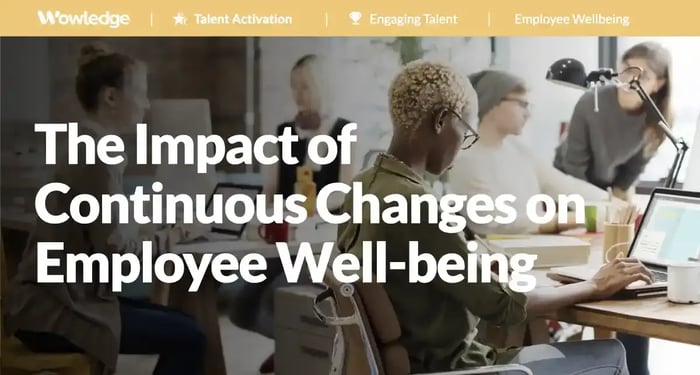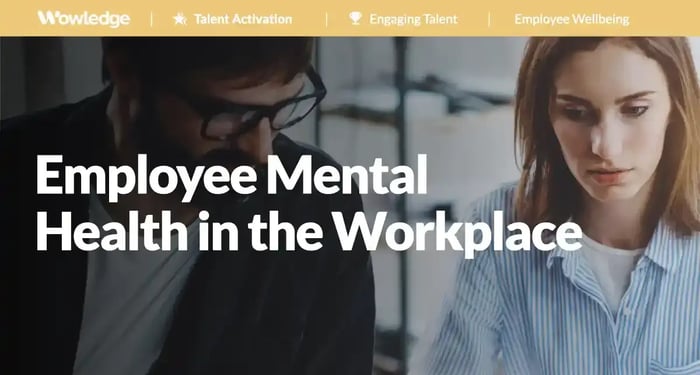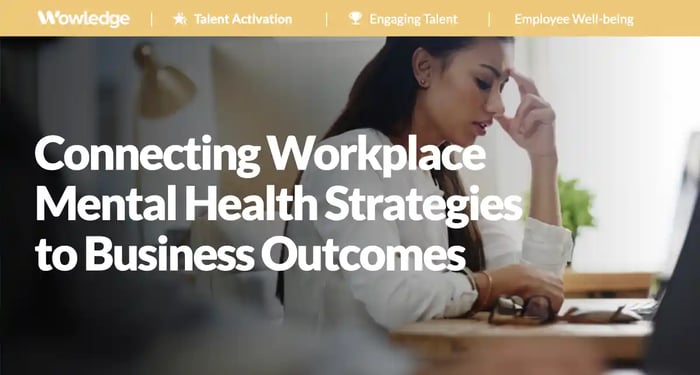Table of Contents
The work environment is constantly evolving to keep up with changing market conditions and technological advancements. While this can lead to increased productivity, it can also significantly impact employee well-being if a company doesn’t handle the challenges effectively. Understanding the impact of a continuously changing work environment on employee well-being is crucial for businesses to help ensure their employees are healthy, engaged, and motivated.
Employee well-being is critical for the success of any organization. Research has shown that happy and healthy employees are more productive, innovative, and committed to their work. On the other hand, when employees are stressed, burned out, or disengaged, their performance suffers, leading to decreased productivity, higher turnover rates, and lower job satisfaction. That’s why employee well-being is not only important for employees but also has a significant impact on corporate business outcomes.
Factors that can create instability at work
In any work environment, various factors can create instability and uncertainty, leading to a continuously changing work environment. Changes in leadership, unclear objectives, the anticipation of layoffs, and a toxic environment are a few of them. By understanding how these factors impact employees and businesses overall, employers can take proactive measures to mitigate their negative impact on employee well-being.
Changes in leadership
In an organization, there may be instances in which one or more top leaders decide to leave the company or are terminated for underperformance. In these circumstances, the team faces a period of leadership absence, which can cause instability. To minimize interruptions, the key is to communicate the steps moving forward.
In cases where the company intends to find a replacement, it is important to communicate the lead time for filling the position. If there is no intent to find a replacement, the company should provide the team with interim and long-term plans. Providing clarity on these matters can help ease speculation and reduce stress among team members.
Frequent leadership changes can further destabilize the organization and affect employees' trust in the company, as they come to expect the situation to repeat itself. Therefore, employees may become less committed and engaged, making it challenging for a new leader to get their buy-in. Additionally, because a new leader has their own way of doing things, repeated changes can create confusion and reduce team performance.
On the other hand, the leadership transition phase is a great opportunity for the company to identify high-potential employees who step up to lead the team, either temporarily or long-term. However, it is essential to have a conversation with these employees to set expectations on workload and deadlines to avoid burnout and other negative impacts on employee well-being.
Lack of clearly defined objectives
Employees require a clear vision to take applicable action steps and head in the right direction. When a company is unsure of its objectives, it creates chaos and confusion among employees. On the other hand, even when a company defines its new goals, it can still neglect to communicate those effectively to the organization. In either case, employees will struggle to assess what to focus on, and ultimately, it can lead to stagnation due to a lack of clear goals.
Often, the tasks assigned during the phase when the company is redesigning its objectives are time fillers that don't add much value. Without a clear strategy, any action taken may not yield the desired results. In such situations, the best approach is to identify the objectives and involve employees in shaping the strategy moving forward. By leveraging their diverse experiences, employees can feel valued and part of the company, which increases their engagement and commitment in the long run.
Anticipation of layoffs
Unfortunately, layoffs have become increasingly common, whether unexpected or communicated in advance to employees. Either way, after the first wave of layoffs, employees face two pressing questions: "Will I be next?" and "Will I have to pick up the work of those who have left?"
Layoffs bring instability and uncertainty to the workplace. If there are no clear communications, employees will start to wonder when there will be a next round. With this way of thinking, employees may begin seeking alternative employment. They will prioritize their own survival and security over the investment in their current job. While it might be a natural human reaction, it has a negative impact on morale and teamwork.
This type of situation calls for the company to be transparent and to use best practices in planning and conducting layoffs. If the company announces there will be no further reductions in force and then, months later, conducts additional layoffs, it will damage its reputation and erode employees' trust.
Toxic Environment
Working in a toxic environment isn't healthy, nor is it conducive to employee thriving. Its impact on employee well-being can only be estimated. However, prolonged exposure to a toxic environment can lead to stress, burnout, and depression. According to the McKinsey Health Institute survey, toxic workplace behavior is the biggest predictor of burnout symptoms and intent to leave. Toxic culture can manifest in different shapes and forms, such as toxic leadership or harmful employees, and can be seen in behaviors like micromanagement, blaming, bullying, gossiping, or even narcissism.
According to the American Psychological Association’s 2022 Work and Well-being Survey results, nearly one in five (18%) employees described their workplace as somewhat or very toxic. A toxic workplace was reported by 22% of employees in manual labor, 21% in customer service/client/patient services jobs, and 15% in office jobs. It's important to note that even in companies with a generally positive work environment, toxic behaviors can still occur on occasion and should be addressed promptly.
To weed out toxicity, leadership must identify the source of the problem and take prompt action. Most of the time, it includes letting toxic individuals go if there is no chance for improvement. This sends a very clear message that toxic behavior is not tolerated and that employee well-being is a priority for the company.

Continuous change impacts both the employee and the employer
Continuous change has become a hallmark of modern times. While change can bring many benefits, it can also create significant challenges for both employees and employers.
Impact on the employee
When changes occur in the workplace, employees usually divide into two groups: those who take action and those who don’t. The first group will increase their productivity to ensure the employer is aware of their contributions. The second group may delay starting tasks, prolong work breaks, and start looking for a new job. What both groups have in common is stress.
According to the World Health Organization, stress can be defined as a state of worry or mental tension caused by a difficult situation. While occasional stress can motivate us to act, chronic stress can have a negative impact on our overall well-being. The way we manage stress determines how much it affects us, and when we are in a continuously unstable, stressful environment, managing it can become a challenge.
Whenever exposed to an event perceived as stressful, frightening, or dangerous, the human body enters the fight-or-flight response. The response is triggered by hormones that prepare the body to either stay and face a threat or run away to find safety. This is a normal human reaction to ensure their survival. However, nowadays people are exposed to many more stimuli than their ancestors were, which raises the stress they experience. If the employee is under continuous stress and the body doesn’t have enough time to relax and return to its baseline, this can further lead to chronic stress, which can manifest as decreased energy, fatigue, aches and pains, irritability, nervousness and anxiety, and burnout.
Anxiety is an internal reaction to stress, and according to the American Psychological Association, anxiety is an emotion characterized by feelings of tension, worried thoughts, and physical changes like increased blood pressure. If an employee is continuously exposed to uncertainty, anxiety can easily intensify, leading to the creation of a negative narrative in the employee’s head. Anxiety can aggravate the employee and increase the instances of fight or flight mode since it is future-oriented and worrisome in nature.
Strongly related to anxiety is burnout, with its symptoms such as energy depletion, exhaustion, mental distance from one’s job or cynicism about the job, and reduced efficacy. It is a state that develops over time. Since the human body is not designed to remain in prolonged fight-or-flight mode, it will eventually protect itself, which manifests as burnout. According to Gallup, there are five causes of burnout:
- Unfair treatment at work
- Unmanageable workload
- Unclear communication from managers
- Lack of manager support
- Unreasonable time pressure
When an employee works in a turbulent environment with frequent changes or no clear pathway forward, they can easily feel overwhelmed and quickly develop burnout. Experiencing chronic stress, anxiety, and burnout has a negative impact on employee well-being and, consequently, on their productivity and the results they deliver. According to another survey from the American Psychological Association Work and Well-being, those who typically feel tense or stressed out during the workday are more than three times as likely (71% vs. 20%) to say they intend to seek employment elsewhere in the following year.
When an employee decides to leave the company, their approach to the next employer might also be impacted. Depending on the level of trauma they experienced, they might develop trust issues with the next employer, be cautious, and play it safe from day one. This can lead to reduced dedication and commitment to their work, resulting in a lower return on investment for the company.
Impact on the employer
When a company faces various challenges, how it handles them becomes a testament to its brand. It is common practice to check a company's reputation on review websites like Glassdoor or to ask for opinions from professional networks or even friends. Employees share their opinions freely, and some will recommend their company to others, while others will not. And it isn’t only employees who share their experiences—suppliers, partners, and other external stakeholders’ feedback will also have an impact on how the company is portrayed. If the company doesn’t manage challenges effectively and negative feedback starts to spread, it can cause reputational damage.
Lack of trust is another consequence of poorly managed changes. At first, the employee will naturally assume the company can manage the situation that has arisen. If the situation spirals out of control and the leadership team cannot manage it, it is natural for employees to doubt the team's capabilities. If the company faces the same issues repeatedly, employees will lose trust in the company, seeing it as incapable of running the business. On top of that, any new project or initiative that the company tries to implement will be approached with caution or even skepticism. Based on previous experience, employees will assume it will be another failed attempt.
Apart from reputational damage and lost trust, a company that puts its employees through significant changes can lose its biggest asset: its employees. When employees must continuously adjust to the changes, they become depleted. If they don’t see hope for positive change, it’s natural for them to look for other employment. This leads to a loss of tenured knowledge and experience, requiring the company to recruit and train new employees or distribute workloads among those who stayed. The latter will lead to low morale within the team, which can then prompt more employees to follow suit in search of a better work environment. Continuation of this vicious circle can result in additional challenges for the company, including difficulties attracting new talent. It is important for the company to closely monitor its turnover rate, as a high turnover rate indicates underlying dysfunction.

What are the steps the company can take to ensure little to no impact on employees' well-being?
Although change is crucial for companies to stay competitive, it can significantly affect employees' well-being. Companies can take various steps to minimize adverse effects and ensure that employees' well-being is not significantly impacted during such transitions.
1. Be transparent
The best approach the company can take in times of continuous change is to be honest and regularly communicate with its employees. The uncertainty that is created by a lack of communication adds stress, which can be avoided. Of course, the transparency won’t remove the stress altogether; however, it gives an employee an opportunity to prepare for different scenarios. Employees might already know, for example, that the company’s situation will require downsizing. Nevertheless, if employees are informed about what might happen, it gives them psychological safety and time to prepare or act immediately. Otherwise, on the day when the layoff starts, they will be left surprised, lost, and overwhelmed.
Open communication signals to employees that they are valued and that the company is doing its best to protect them. This approach will go a long way toward building a good reputation, as employees (even those affected by layoffs) will tend to speak well of how the company managed the challenges.
2. Provide external support
A turbulent work environment is challenging for every single employee. The difference is in its management. Some employees can cope longer in times of change; however, for others, continuous uncertainty can be too much to bear. The leadership team should be able to understand, based on each employee's group experience, who they need to look out for more.
The company can decide to provide external support so that employees feel comfortable being open. That can be a therapist or Psychologist with whom to process the current circumstances if the employees need help in making sense of the situation they are in. Alternatively, a coach can help guide the employee in finding the answer to their next action point.
A company might not have the resources to provide the same, especially during major layoffs. However, even suggesting that employees seek support outside the organization can prompt them to take the right action.
3. Build employee resilience
Having different work and life experiences leads to varying levels of resilience, which, simply put, is the ability to bounce back or adapt after experiencing difficulty. Helping employees become resilient also allows the company to build a stronger workforce, since resilience is a valuable skill that can be used in day-to-day challenging situations.
Building resilience can be achieved through training that helps employees learn to regulate their feelings, view things from different perspectives, become more flexible and agile, and build self-esteem. It gives them the tools to feel a sense of control over their choices in times of crisis, so they can come out of it better.
4. Involve employees
Leaving employees without clear information about what’s happening in the company invites speculation that can lead to worst-case scenarios. To avoid that, the company can involve employees in the transition process. That can range from improving a team to creating a new strategy for the entire company.
Utilizing employees in challenging times demonstrates trust in their capabilities and skills and shows appreciation for their knowledge and experience. Once involved, the company's challenges become their challenges, and they will work harder to find the most effective ways to help the company.
5. Foster a safe environment
When times are tough, it is easy for the employee to focus on themselves and their own best interests. That can create a toxic environment that significantly impacts collaboration. When employees focus only on themselves and their position, they won’t share much information or be very helpful to their colleagues. However, without cooperation between employees or departments, the company will begin to stagnate, and the work environment will worsen.
To ensure the work environment doesn’t become hostile or toxic, the company must continuously monitor what’s happening during the crisis. The employer can take steps to formally listen to/survey employees so that any conflicts that arise don’t get out of control. Using such insights, the company can take prompt action when there are initial signs of unacceptable behavior and encourage employees to look after/support each other. When a company proactively takes action to protect its culture, employees will feel they can speak up when something starts to go astray, thus fostering a safe environment.
What steps should employees take for themselves?
While companies are increasingly responsible for ensuring their employees' well-being, individuals also need to take steps to protect themselves from the harmful effects of a constantly changing work environment. By taking proactive action, they can manage their own stress and anxiety and improve their overall well-being.
1. Identify stressors and triggers
It's important to recognize that the continuously changing work environment can be stressful and overwhelming for employees. To manage stress and anxiety, employees can start by identifying the stressors and triggers that cause negative emotions and reactions. These stressors can be caused by people or circumstances, so it's crucial to observe oneself for some time and note down the stressful occurrences along with the thoughts and feelings associated with them. Keeping a record of situations, thoughts, and emotions can provide a better understanding of what causes stress and anxiety for each individual, helping them to identify patterns and develop coping strategies to manage stress and anxiety in a more constructive way.
2. Release stress and anxiety
More often than not, individuals manage their stress through unhealthy means such as consuming comfort food, binge-watching TV shows, or sleeping too much. Studies have shown that these techniques do not effectively reduce stress levels. A more proactive approach would be for employees to establish alternative strategies to release stress and anxiety. For example, engaging in physical activities such as yoga, exercise, or walking can be beneficial. Meditation is also a great stress-relieving technique that can be practiced throughout the day or before bedtime to prevent overthinking. Creating a consistent sleep routine that limits caffeine intake in the afternoon and refrains from using electronic devices at least an hour before bed can also help reduce stress.
3. Establish boundaries
Employees may feel the need to be available 24/7, especially when they are constantly waiting for additional information or news about another change at work, or when they want to discuss the changes and share their concerns with colleagues after working hours. Nevertheless, establishing individual boundaries can provide a necessary break from work-related stressors. Boundaries may differ for each employee. For some, it can mean abstaining from checking emails after working hours or putting work-related collaboration groups (e.g., WhatsApp) on mute; for others, simply disengaging from negative conversations. The key is for each employee to establish a boundary to prevent work-related stress from consuming their personal life.
4. Take time to recharge
The importance of taking time to recharge cannot be overstated, especially during periods of constant workplace change. The way each employee chooses to recharge will vary, from taking a full vacation with no access to email to a weekend getaway to even just an afternoon spent unplugged on a long walk. It is important to dedicate this time to recharging rather than continuing to think about work, even though it may be tempting. Stepping away from the environment that is causing stress, anxiety, or burnout gives an employee a chance to refresh and assess the situation from a less emotional perspective. Time away is significant because it can help employees determine what’s best for them and how to advance in the ever-changing workplace.
Change is inevitable; therefore, creating a stable work environment is crucial for both employees and employers. Changes in leadership, unclear objectives, anticipation of layoffs, and a toxic environment can cause instability at work and lead to employee stress, burnout, and disengagement. Companies have a choice: either to take action to mitigate these factors or indirectly state that a stable and healthy work environment isn’t their priority. On the other hand, employees can also take steps to manage their stress levels and respond effectively to stressful situations. Ultimately, a stable work environment benefits everyone involved, leading to a more engaged and motivated workforce and a more successful company overall.
Relevant Practices & Tools
Core Workplace Wellness Practices for Building the Fundamentals of Total Worker Health. >
Workplace wellness has become a fundamental expectation of workers and only continues to grow as new pressures are put on the workforce... more »
Integrating Workplace Wellness Into Brand Messaging to Create Market Awareness and Attract Customers and Talent. >
When wellness is considered a critical part of the business, it becomes integral to the organization's internal and external brands... more »
Conducting a Formal Wellness Assessment to Identify Critical Priorities for Driving Employee Well-being and Talent Outcomes. >
As the environment for wellness is more clearly understood, it is necessary to identify programs and offerings that will help protect worker health and support those who become ill or injured... more »
Creating a Communication and Awareness Strategy that Supports Cultural Integration of Wellness Programs and Investments. >
Wellness programs and initiatives are only worthwhile if employees use them. While this seems obvious, it can be the most significant barrier to success... more »
The Hierarchy of Controls Matrix: Define Actionable Strategies to Reduce Employee Exposure to Workplace Hazards with Systematic Approaches. >
This tool provides a structured framework for exploring, evaluating, and prioritizing measures to eliminate or control workplace hazards... more »
FAQs
What leading indicators show employee well-being is slipping during constant change?
Early signs include rising unplanned absences, missed one-on-one meetings, slower work production cycle times, and more IT or HR tickets tied to workload or system access issues. Watch for PTO avoidance, spikes in after-hours email or system accesses, and an overload of meetings on people’s calendars. Map these by team and manager, then use those as a signal to trigger a timely situation review and develop an action plan to address the core issues before they evolve into employee burnout.
How should leaders communicate during leadership turnover to protect morale?
Set a clear message on how the void will be filled on day one: who is serving as the interim leader, how decision rights will change, and when the next update on filling the leadership gap will be shared. Communicate the basics of the search or transition plan, clarify or restate the interim priorities, and share what will and will not change. Keep updates short, on a fixed schedule, and always close the loop on open questions to reduce rumors and stress.
How can a company build resilience without big budgets?
Offer short educational videos and behavioral skill practice labs on the basics and triggers of stress, sleep disruptions, conflict, and workload triage, and how to manage them for on-demand use. Create peer circles that meet monthly with a simple guide and rotate a trained facilitator. Give managers a one-page “talk, adjust work, refer” playbook and measure use in one-on-ones. Offer stress-reduction classes and resources, including exercise, meditation, and conflict management.
What guardrails help prevent after-hours “work creep” in hybrid or high-change periods?
Set core work hours (start, stop, lunch), response-time norms, and common “quiet hours” that apply to everyone. Delay-send emails, limit or disallow off-hour or evening meetings, and post team calendars with focus blocks. Judge work by outcomes, not online time, and audit message volume monthly to keep drift away from the stated standards in check.










